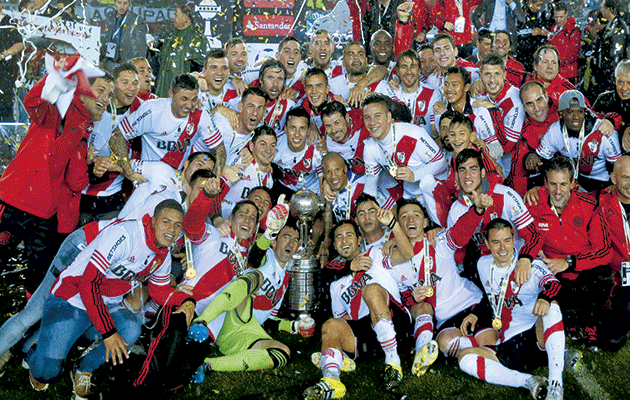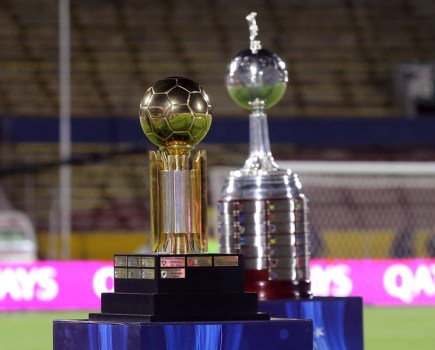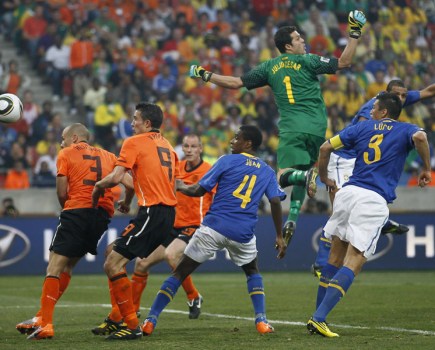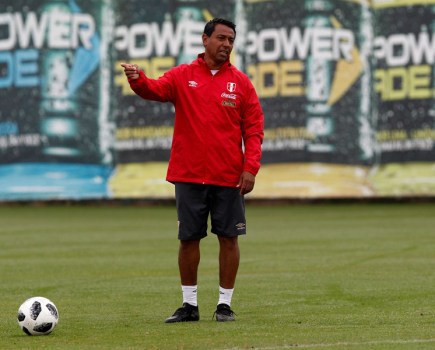In the last week’s action in the group phase of the Copa Libertadores, nine clubs battle for the remaining five slots in the knock out round.
Meanwhile, though, a bigger battle is going on – the fight to make the competition more financially viable for the clubs.
Leaks from the Panama Papers have made it clear just how much South America’s premier club competition has been undervalued. It would appear that, in a succession of contracts over a 10 year period, Conmebol have sold the rights to the competition to a company based in the Cayman Islands for a total of around $370 million.
To put that into perspective, this is a sum roughly equivalent to the amount that Brazil’s TV Globo pays to screen the country’s domestic championship – for one year. And the Libertadores, in addition to the South American continent, is also relevant to the huge Mexican market, since teams from that country are invited to take part.
It is worth recalling that the so-called Fifagate scandal was in reality a question of corruption in the Americas, with TV executives confessing to having bribed officials in order to secure rights at knockdown prices. Whatever has happened with the rights to the Libertadores, it would seem clear that they have been sold cheaply – with the consequence of huge profits for the company that then sells them on to broadcasters, and a lack of funds for the clubs involved. And here it is worth remembering that the Libertadores is an expensive business for the clubs. Distances are huge in South America – especially when the long trips up to Mexico are factored in – and travel is costly.
The clubs gained a slightly better deal this year, with the prize money paid for every group game doubling to $600,000, and Conmebol waiving its right to 10% of the stadium box office. But this has not proved enough to stave off a rebellion.
Representatives from big clubs of every South American country have formed an association, staging a series of meetings in a number of cities across the continent. It is not yet clear precisely what this association intends to do. In the early days there would seem to be competing visions as to its function. Should it serve as a pressure group aimed at getting a better deal from Conmebol for taking part in the present competitions? Or might it be a starting point for the clubs to set up their own competitions?
Should it turn out to be the latter, this might lead into an area which is both interesting and problematic – that of a truly Pan-American club competition. There has been some corporate interest in setting up such a tournament, which has an obvious appeal; the MLS has momentum behind it but lacks the credibility that history can bring. The South American giants, on the other hand, have tradition to burn, but are greatly undermined by financial factors – forcing them, for example, to sell off their stars at an ever younger age. There is, then, a natural fit between the two Americas.
What there is not, however, is ease of travel. If getting around South America is hard enough in the Libertadores, with epic trips to Mexico, then imagine the scenario when those journeys are extended up to Toronto. With so much travelling time, it is unclear whether there is logistical viability in a midweek Pan-American competition on the lines of the Libertadores.
Perhaps the way forward might be to stage an annual tournament, held in one country, between, say, the best four clubs from both Conmebol and Concacaf – a way of easing the logistics, allowing the two confederations to preserve their identities and the value of their own version of the Champions League, and yet still creating an interesting new trophy with the synergies cited above. Maybe the first one could be held in Panama.







